First English Civil War
The 1642 to 1646 First English Civil War is one of a series of connected conflicts in the kingdoms of England, incorporating Wales, Scotland, and Ireland. Known collectively as the 1638 to 1651 Wars of the Three Kingdoms, others include the Second English Civil War, the Irish Confederate Wars, the 1638 to 1640 Bishops' Wars, and the Cromwellian conquest of Ireland.
| First English Civil War | |||||||
|---|---|---|---|---|---|---|---|
| Part of the English Civil War | |||||||
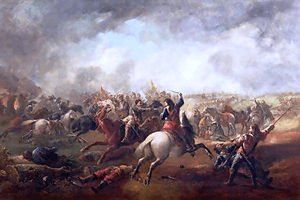 The Battle of Marston Moor, by James Barker | |||||||
| |||||||
| Belligerents | |||||||
|
|
| ||||||
| Commanders and leaders | |||||||
|
| ||||||
It is estimated between 1638 to 1651, Britain suffered a total of 250,000 war-related deaths, equivalent to 5% of the population, or roughly double those in 1914-1918. Ireland incurred roughly the same number, or 15-20% of the pre-1641 population.[1] These figures are important in understanding the impact of the conflict on society, and the bitterness it engendered.
English Royalists backed Charles I, with limited help from Irish and Scots Royalists. They were opposed by supporters of Parliament, who agreed a military alliance with Scots Covenanters, in return for signing the 1643 Solemn League and Covenant. However, moderates tried to avoid war, and choice of sides often came down to personal loyalties.
In August 1642, both sides expected a quick victory; it soon became clear this was not the case, while a lengthy war highlighted Parliament's greater financial resources. The Royalists had the better of the conflict in 1643, before suffering a series of reversals in 1644, the most significant being the Battle of Marston Moor. The formation of the New Model Army in early 1645 gave Parliament the first professional force in England, and their victory at Naseby in June 1645 proved decisive.
The war ended with victory for Parliament in June 1646, and Charles in custody. His refusal to negotiate led to the Second English Civil War in 1648.
Overview
The 1642 to 1646 First English Civil War is one of a series of connected conflicts in the three kingdoms of England, Scotland, and Ireland. Known collectively as the 1638 to 1651 Wars of the Three Kingdoms, they include the Irish Confederate Wars, the 1638 to 1640 Bishops' Wars, and the Cromwellian conquest of Ireland. The political issues at stake were only resolved by the 1688 Glorious Revolution, and arguably beyond.[2]
Separately, it forms part of the 1642 to 1651 English Civil War, which is divided into three segments; the First (1642–1646), Second (1648-1649), and Third (1649–1651).[3] Some argue the latter is actually an Anglo-Scottish War, since it was fought between Scots and English armies, and not accompanied by an uprising in England.[4]
Royalist v Parliamentarian

Presenting the opposing parties as Cavaliers, 'wrong, but romantic', and Roundheads, 'right, but repulsive', has long been accepted as outdated, but still informs modern perceptions.[5] Historians like Tim Harris argue that by 1640 there was general consensus that Personal Rule had gone too far. This changed after submission of the Grand Remonstrance in late 1641, when moderates like Clarendon switched sides, arguing Parliament now wanted too much.[6]
John Pym, leader of the Parliamentary opposition, differed from Clarendon, and many of his own colleagues, in clearly understanding Charles had no intention of keeping any commitments. Even while negotiating, both he and Henrietta Maria made it clear to foreign ambassadors they intended to use force to retrieve their position. At the same time, the Irish Catholic rebels claimed his approval for their actions, a claim given weight by previous attempts to use them against his Scottish opponents.[7]
Regardless of religion or political belief, the vast majority were 'Royalist', in terms of a shared belief that a 'well-ordered' monarchy was divinely mandated. They disagreed on what 'well-ordered' meant, and who held ultimate authority in clerical affairs. Royalists generally supported a Church of England governed by bishops, appointed by, and answerable to, the king; Puritans believed he was answerable to the leaders of the church, appointed by their congregations.[8]
However, 'Puritan' was a term for anyone who wanted to reform, or 'purify', the Church of England, and contained many different sects. Presbyterians like Pym were the most prominent, but there were many others, such as Congregationalists, often grouped together as Independents. Close links between religion and politics added further complexity; one reason for opposition to bishops was their presence in the House of Lords, where they often blocked Parliamentary legislation. Their removal by the 1640 Clergy Act was a major step along the road to war.[9]
Most Presbyterians were political conservatives, who believed in a limited electorate, and wanted to keep the Church of England, but as a reformed, Presbyterian body, similar to the Church of Scotland. Independents believed any state church was wrong; they included Oliver Cromwell, and much of the New Model Army, while many were also political radicals like the Levellers. As the war progressed, Presbyterians in England and Scotland came to see them as more dangerous than the Royalists; an alliance between these groups led to the Second English Civil War in 1648.[10]
Lastly, England in 1642 was a structured, socially conservative and largely peaceful society, that went to war with great reluctance. The example of the Thirty Years War meant many wanted to avoid conflict at any cost; in its early stages, there were many examples of armed neutrality, or local truces, designed to force the two sides to negotiate.[11]
Opening moves
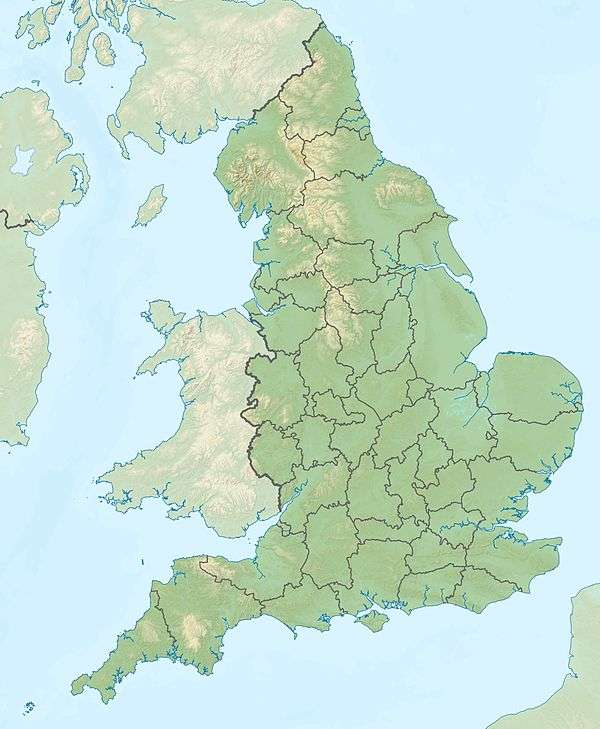
Over the winter of 1641 to 1642, many towns strengthened their defences, and purchased weapons, although this was not necessarily in response to fears of conflict between Charles and his Parliament. Lurid details of the 1641 Irish Rebellion meant many were more concerned by a claims of a Catholic invasion.[12]
While both sides supported raising troops to suppress the Irish rising, alleged Royalist conspiracies to use them against Parliament meant neither trusted the other with their control. Charles' departure from London in January 1642 handed Parliament the largest city, port and commercial centre in England. They also gained the country's largest weapons store in the Tower of London, and the best equipped local militia, or Trained bands.
Founded in 1572, these were organised by county, controlled by Lord-lieutenants appointed by the king, and constituted the only permanent military force in the country. The muster roll of February 1638 shows wide variations in size, equipment and training; Yorkshire had the largest, with 12,000 men, followed by London with 8,000, later increased to 20,000. Many 'Royalist' counties like Shropshire or Glamorgan had fewer than 500 men.[13]
In March 1642, Parliament approved the Militia Ordinance, claiming control of the trained bands; Charles responded with his own Commissions of Array. More important than the men were the local arsenals, with Parliament holding the two largest in London, and Hull. These belonged to the local community, who often resisted attempts to remove them, by either side. In Royalist Cheshire, the towns of Nantwich, Knutsford and Chester declared a state of armed neutrality, and excluded both parties.[14]
Ports were another vital area; until the advent of railways in the 19th century, bulk supplies were imported and transported using water. Most of the Royal Navy declared for Parliament, and by September, they controlled every major port in England apart from Newcastle. This prevented Royalist areas in Wales, South-West and North-East England from supporting each other, and restricted the import of supplies. In February 1642, Charles sent his wife, Henrietta Maria, to the Hague, to raise money and purchase weapons. Lack of a secure port delayed her return until February 1643, and even then, she narrowly escaped capture.[15]
Charles' failure to secure the Royal Navy, which was largely his own creation, significantly damaged his cause. Its control ensured Parliament could protect the trade routes vital to the London merchant community, block Royalist imports, and provided them a powerful diplomatic tool.[16]
1642 campaign
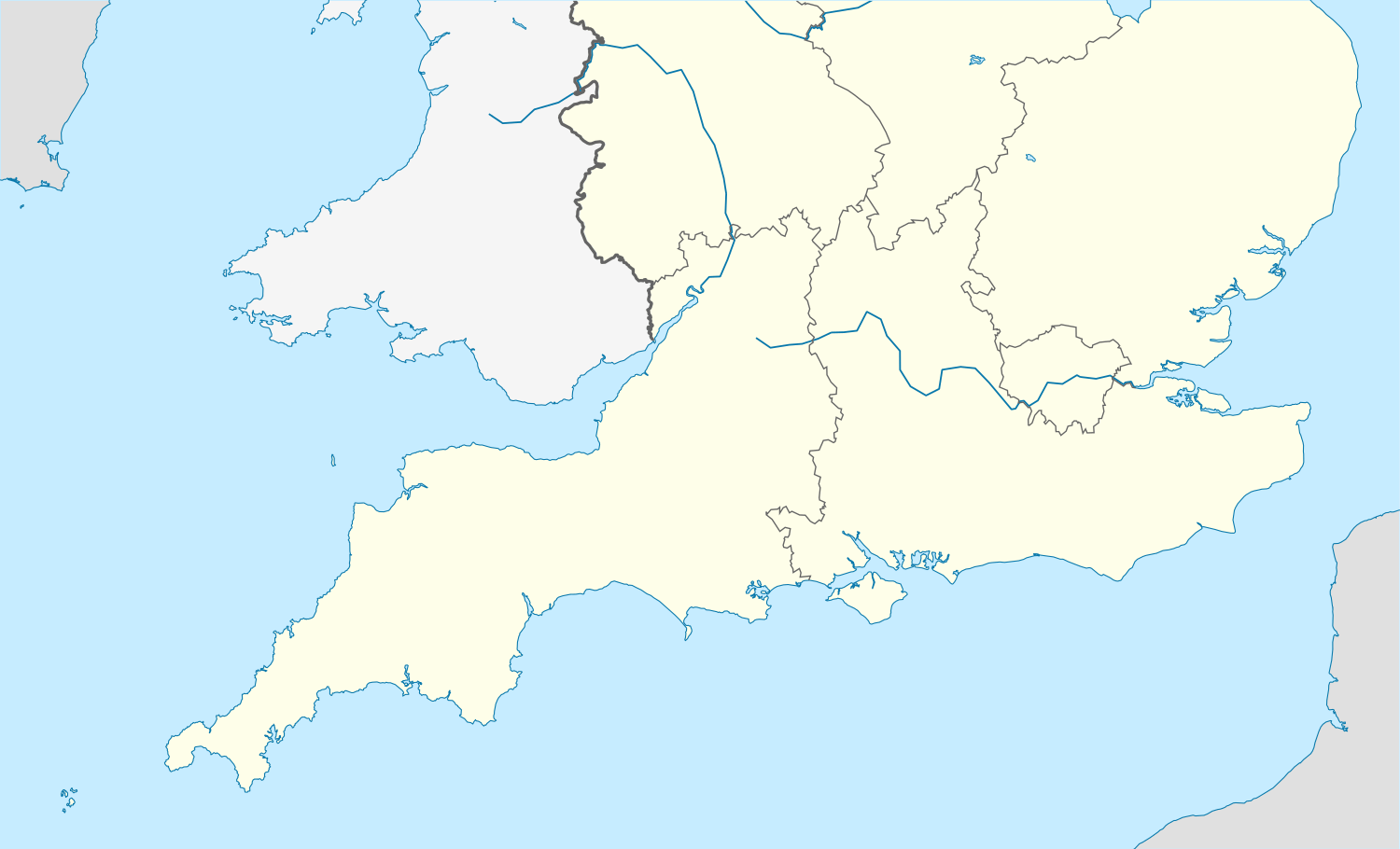
Both sides expected a single battle and quick victory; for the Royalists, this meant capturing London, for Parliament, it was 'rescuing' the king from his 'evil counsellors.' After failing to capture Hull, or raise significant forces in Yorkshire, Charles left York in July.[17] He moved to Nottingham, selected because of its proximity to Hull, which he still hoped to secure.[18]
He declared war on 22 August 1642, but by early September, had recruited only 1,500 horse and 1,000 infantry, with much of England hoping to remain neutral.[19] Financing from the mercantile community, and the use of weapons stored in the Tower, allowed Parliament to recruit, and equip, an army of 20,000. It was commanded by the Presbyterian Earl of Essex, who left London on 3 September for Northampton, close to Nottingham.[20]
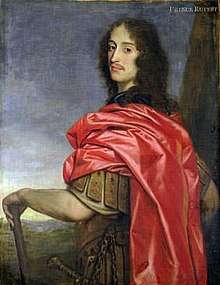
Charles relocated to Shrewsbury, further away from London, but where his supporters had been recruiting soldiers. When Essex learned of this, he marched on Worcester, where the first major encounter of the war took place at Powick Bridge on 23 September. A relatively minor Royalist victory, it established the reputation of Prince Rupert, and demoralised the Parliamentary cavalry.[21]
The Royalist army now numbered around 15,000, although much of the infantry were armed with clubs or scythes. While better equipped, Essex' force was half-trained, poorly disciplined, and his logistics inadequate to support such numbers. Charles headed for London, while Essex tried to prevent it; on 23 October, the two armies fought a bloody, chaotic, and indecisive battle at Edgehill.[22]
Essex continued retreating towards London; after an inconclusive encounter on 16 November at Turnham Green, west of London, operations ended for the winter. The Royalists withdrew to Oxford, which became their capital for the rest of the war. Elsewhere, Sir William Waller secured the south-east for Parliament; in December, Lord Wilmot captured Marlborough, opening communications between Oxford, and Royalist forces based at Launceston, in Cornwall.[23]
1643 campaign
The events of 1642 showed the need to plan for a lengthy conflict. For the Royalists, this meant fortifying their new capital in Oxford, and connecting areas of support in England and Wales; Parliament focused on consolidating control of the areas they already held. Although peace talks were held, both parties continued to negotiate for Scots and Irish support.[24]
Fighting continued during the winter in Yorkshire, as Royalist leader Newcastle tried to secure a landing place for an arms shipment from the Dutch Republic. He had insufficient troops to hold the entire area, and Parliamentary forces under Lord Fairfax and his son Sir Thomas, retained key towns like Hull, and Leeds. In late February, the weapons convoy carrying Henrietta Maria landed at Bridlington; on 4 June, she left York escorted by 5,000 cavalry, arriving in Oxford in mid-July.[25]
In the south-west, Royalist commander Sir Ralph Hopton secured Cornwall with victory at Braddock Down in January. In June, he advanced into Wiltshire, inflicting a serious defeat on Waller's 'Army of the Southern Association' at Roundway Down on 13 July. Arguably the most comprehensive Royalist victory of the war, it isolated Parliamentary garrisons in the west. On 26 July, Prince Rupert stormed Bristol, gaining the second largest city in Britain, and a landing point for reinforcements from Ireland.[26]
Throughout the war, following a co-ordinated strategy was an issue for both sides, since troops were often reluctant to fight outside their home regions. Weak central control made this a greater problem for the Royalists, with their Northern and Western Armies acting as independent commands. However, these successes seemed an opportunity to force Parliamentary moderates into a negotiated peace, and in September, they agreed a three-part offensive against London.[27]

After taking Gloucester, the main army under Prince Rupert would move against London, while Newcastle tied down the Eastern Association army by advancing into East Anglia and Lincolnshire. Finally, Hopton would march into Hampshire and Sussex, threatening London from the south, and closing the iron foundries that were Parliament's main source of armaments.[28]
However, Essex forced Prince Rupert to abandon efforts to take Gloucester, then checked his advance on London at Newbury on 20 September.[29] Although Hopton reached Winchester, Waller prevented him making further progress; in October, Newcastle abandoned the second siege of Hull, while victory at Winceby secured eastern England for Parliament. By the end of 1643, the war appeared set for a long and bloody struggle.[30]
In Ireland, a truce between the Catholic Confederation and Irish Royalists allowed them to transfer troops to England. However, it cost Charles the support of many Irish Protestants, especially in Munster, and ended negotiations with the Covenanter government. In the Solemn League and Covenant of September, the Scots agreed to provide Parliament military backing, in return for subsidies, and discussions on creating a single, Presbyterian church.[31]
1644 campaign

The Solemn League and Covenant created a Committee of Both Kingdoms, which for the first time co-ordinated strategy in all three war zones, England, Scotland and Ireland. The Scots under Leven were ordered to take Newcastle, securing coal supplies for London, and closing the major import point for Royalist war supplies. He besieged the town in early February, but made little progress, with the Earl of Newcastle based nearby at Durham.[32]
On 29 March, Waller ended the offensive in Southern England by defeating Hopton at Cheriton, then joined Essex to threaten Oxford. Two weeks later, the Earl of Manchester defeated a Royalist force at Selby, forcing Newcastle to leave Durham, in order to garrison York. The city was besieged by the Scots, Sir Thomas Fairfax, and Manchester's Army of the Eastern Association.[33]
In May, Prince Rupert left Shrewsbury, and marched north, capturing Liverpool and Bolton en route. To avoid being shut up in Oxford, a field army nominally commanded by Charles retreated to Worcester; Essex ordered Waller to remain there, while he went west to relieve the siege of Lyme Regis. On 29 June, Waller clashed with Charles at Cropredy Bridge; his losses were minimal, but his men were demoralised. His army disintegrated, causing panic in London, and allowing Charles to pursue Essex into the West Country.[34]
On the same day, Prince Rupert arrived at Knaresborough, 30 kilometres from York, to find he was faced by a superior force.[35] In the largest battle of the war on 2 July, the two armies met at Marston Moor. The result was a decisive Royalist defeat that lost them the North, and 4,000 elite infantry; York surrendered on 16 July, and the Earl of Newcastle went into exile.[36]
Essex' advance forced the Royalists to abandon Lyme Regis, but he ignored orders to return to London, and continued into Cornwall. In September, his army was trapped at Lostwithiel; 5,000 infantry were forced to surrender, although Essex and the cavalry escaped. At Second Newbury on 27 October, the Royalists lifted the siege of Donnington Castle, and Charles re-entered Oxford.[37]
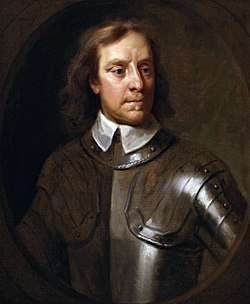
In military terms, by the end of 1644 the Royalists had recovered from the disaster at Marston Moor; of greater concern was their ability to finance the war. Unlike Parliament, which could levy taxes on imports and exports through London and other commercial centres, the Royalists simply took supplies from the areas they controlled. This led to the creation of Clubmen, or local self-defence associations; they opposed confiscations by either party, but were a bigger issue in Royalist areas like Cornwall and Hertfordshire.[38]
The loss of major leaders like John Pym and John Hampden in 1643 meant divisions in Parliament grew increasingly bitter. Supported by the Scots, the 'Peace Party' were concerned by political radicals like the Levellers, and wanted an immediate, negotiated settlement. The 'War Party' fundamentally mistrusted Charles, and saw military victory as the only way to secure their objectives. They strongly objected to the Scottish demand for a unified, Presbyterian church of England and Scotland; Oliver Cromwell claimed he would fight, rather than accept such terms.[39]
This caused public recriminations over the failure to exploit Marston Moor, Essex' capitulation at Lostwithiel, and Manchester's alleged unwillingness to fight at Newbury. Accusations against Manchester and Essex were not confined to Cromwell, but shared by some Presbyterians, including Waller.[40] In December, Sir Henry Vane introduced the Self-denying Ordinance, requiring any officers in the army or navy who were also members of Parliament to resign from one, or the other. This automatically removed Manchester and Essex, since they could not resign their titles, although it was later amended to allow them to be re-appointed, 'if Parliament approved.'[41]
The other major outcome was the creation of a centralised, professional force, the New Model Army. While there was general agreement on the need, Cromwell ensured it was recruited from those who thought like him, and it was regarded with suspicion by his opponents. Although the Northern and Western Association armies were retained, their role was limited to reducing Royalist garrisons. Sir Thomas Fairfax was appointed commander, with Philip Skippon in charge of the infantry; Cromwell commanded the cavalry, under a 'temporary' three month commission, constantly renewed.[42]
1645 campaign

In January, representatives of both sides met at Uxbridge to discuss peace terms, but talks ended without agreement in February. Failure strengthened the pro-war parties, since it was clear Charles would never make concessions voluntarily, while divisions among their opponents encouraged the Royalists to continue fighting.[43]
In early 1645, the Royalists still controlled most of the West Country, Wales, and counties along the English border, despite losing their key supply base at Shrewsbury in February.[44] Lord Goring's Western Army made another attempt on Portsmouth and Farnham; although he was forced to retreat, it showed Parliament could not assume this area was secure, while Montrose's Highland Campaign opened another front in the war.
On 31 May, Prince Rupert stormed Leicester; in response, Fairfax and the New Model Army abandoned their blockade of Oxford, and on 14 June, won a decisive victory at Naseby.[45] Defeat cost the Royalists their most formidable field army, along with their artillery train, stores, and Charles' personal baggage. This included his private correspondence, detailing efforts to gain support from the Irish Catholic Confederation, the Papacy and France. Published by Parliament in a pamphlet entitled The King's Cabinet Opened, it seriously damaged his reputation.[46]
After Naseby, Royalist strategy was to preserve their positions in the West and Wales, while taking their cavalry north to link up with Montrose in Scotland. Charles also hoped the Confederation would supply him 10,000 Irish troops, who would land in Bristol, then combine with Lord Goring to smash the New Model. These plans were largely fantasy, and the only result was to deepen divisions among the Royalist leadership.[47]
_by_Robert_Walker_and_studio.jpg)
Concerned by the wider implications of Royalist defeat, French chief minister Cardinal Mazarin now looked for ways to restore Charles with minimal French intervention. Talks were held between his representative, de Montereul, and Lord Lothian, a senior Covenanter who was deeply suspicious of Cromwell and the Independents. Ultimately, these made little progress.[48]
Prince Rupert was sent to supervise the defence of Bristol and the West, while Charles made his way to Raglan Castle, then headed for the Scottish border. He reached as far north as Doncaster in Yorkshire, before retreating to Oxford in the face of superior Parliamentarian forces. In July, Fairfax lifted the siege of Taunton; a few days later at Langport, he destroyed Lord Goring's Western Army, the last significant Royalist field force.[49]
At the end of August, Charles left Oxford to relieve Hereford, which was besieged by the Covenanter army; as he approached, Leven was ordered to return to Scotland, following Montrose's victory at Kilsyth. The king moved onto Chester, where he learned Prince Rupert had surrendered Bristol on 10 September; shocked by the loss, Charles dismissed his nephew.[50]
A detachment from the New Model under Colonel Rainsborough captured Berkeley Castle, another led by Cromwell took Royalist positions at Basing House and Winchester. Having secured his rear, Fairfax began reducing remaining positions in the west; by now, Clubmen militia in Hampshire and Dorset were as big an issue as the Royalist army.[51]
After his remaining cavalry were scattered at Rowton Heath on 24 September, Charles returned to Newark. On 13 October, news reached him of Montrose's defeat at Philiphaugh a month earlier, ending plans for taking the war into Scotland. The loss of Carmathen and Chepstow in South Wales cut connections with Irish Royalists (see Map), forcing Charles back to Oxford, where he spent the winter besieged by the New Model.[52]
1646: conclusion

Following the fall of Hereford in December 1645, the Royalists held only Devon, Cornwall, North Wales, and isolated garrisons in Exeter, Oxford, Newark, and Scarborough Castle. Chester surrendered in February, after which the Northern Association Army joined the Covenanters besieging Newark. Hopton replaced Lord Goring as commander of the Western Army, and attempted to relieve Exeter. Defeated by the New Model at Torrington on 16 February, he surrendered at Truro on 12 March.[53]
The last pitched battle of the war took place at Stow-on-the-Wold on 21 March, when 3,000 Royalists were dispersed by Parliamentary forces.[54] With the end of the war in sight, Parliament issued a proclamation, allowing favourable terms for any Royalists who 'compounded' prior to 1 May. Those whose estates had been confiscated could regain them on payment of a fine, which was calculated on the value of their lands, and level of support; many took advantage of this.[55]
After capturing Exeter and Barnstaple in April, the New Model marched on Oxford; on 27 April, Charles left the city in disguise, accompanied by two others. Parliament learned of his escape on 29th, but for over a week had no idea where he was. On 6 May, they received a letter from David Leslie, the Scottish commander at Newark, announcing he had Charles in custody. Newark surrendered the same day, and the Scots went north to Newcastle, taking the king with them. This led to furious objections from Parliament, who approved a resolution ordering the Scots to leave England immediately. [56]
After lengthy negotiations, Oxford capitulated on 24 June; the garrison received passes to return home, Prince Rupert and his brother, Prince Maurice, were ordered to leave England. Wallingford Castle surrendered on 27 July, then the remaining Royalist strongholds, although Harlech Castle in Wales held out until 13 March 1647.[57]
Aftermath
In 1642, many Parliamentarians assumed military defeat would force Charles to agree terms, which proved a fundamental misunderstanding of his character. In August 1645, Prince Rupert suggested the war could no longer be won; Charles wrote back that he agreed, if seen from a military viewpoint, but 'God will not suffer rebels and traitors to prosper'. This deeply-held conviction meant he refused to agree any substantial concessions, frustrating both allies and opponents.[58]
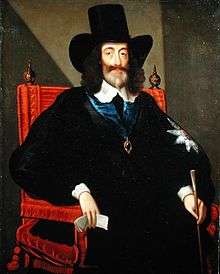
Charles was correct, in his assumption near universal acceptance monarchy was divinely ordered made his position extremely strong, but failed to appreciate the impact of his constant prevarications, both before and during the war. He made peace with the Scots in 1639, then raised an army against them in 1640; his actions prior to March 1642 convinced Parliament he would not keep his promises, and any money they supplied would be employed against them. At one point in 1645, he was negotiating separately with the Irish Confederation, the English Independents, the Covenanters, English Presbyterians, France, and the Papacy.[59]
This created a political grouping that believed Charles could not be negotiated with, without first being defeated, and the ability to enforce it in the New Model Army. Often grouped together as 'Independents', the reality was far more fluid; Sir Thomas Fairfax was a Presbyterian, who fought for Charles in 1639, and refused to participate in his execution, while even Cromwell initially viewed him with great respect.[60]
Charles continued to stall negotiations, to the increasing frustration of all parties, especially members of the New Model, many of whom had not been paid for over a year, and wanted to go home. In March 1647, Parliamentary Presbyterians decided to remove the threat by sending the army to Ireland; only those who agreed would receive their arrears. When regimental representatives, or Agitators, demanded full payment for all in advance, Parliament disbanded the army.[61]
The New Model refused to be disbanded, a mutiny that took even Cromwell and Fairfax by surprise; although disturbed by the radicalism shown by parts of the army, they sympathised with them over pay. These tensions led to the outbreak of the Second English Civil War in 1648.
References
- "British Civil Wars, 1638 to 1651". National Army Museum. Retrieved 22 March 2020.
- Royle 2004, pp. 806-813.
- Zuvich 2015, pp. 88–89.
- Woolrych 2002, p. 398.
- Worsley 2007, p. 462.
- Harris 2014, pp. 457-458.
- Wedgwood 1958, pp. 26-27.
- Macloed 2009, pp. 5–19 passim.
- Wedgwood 1958, p. 31.
- Rees 2016, pp. 103-105.
- Hutton 2003, pp. 155-156.
- Hutton 2003, p. 4.
- "Trained Bands". BCW Project. Retrieved 13 March 2020.
- Hutton 2003, p. 10.
- Purkiss 2006, pp. 249-250.
- Wedgwood 1958, p. 105.
- Malcolm 1977, pp. 254-260.
- Wedgwood 1958, p. 117.
- Hutton 2003, p. 19.
- Royle 2004, pp. 184-185.
- Royle 2004, pp. 186-187.
- Royle 2004, pp. 193-198.
- Wedgwood 1958, pp. 152-153.
- Royle 2004, pp. 208-209.
- Royle 2004, pp. 225, 231.
- Day 2007, pp. 2-3.
- Royle 2004, p. 275.
- Wedgwood 1958, p. 281.
- Wedgwood 1958, pp. 252-254.
- Royle 2004, p. 280.
- Robertson 2014, pp. 109-111.
- Royle 2004, p. 283.
- Wedgwood 1958, p. 308.
- Wedgwood 1958, pp. 330-331.
- Royle 2004, pp. 289-290.
- Royle 2004, pp. 295-299.
- Wedgwood 1958, p. 385.
- Hutton 2003, pp. 156-158.
- Rees 2016, pp. 118-119.
- Cotton 1975, p. 212.
- Wedgwood 1958, pp. 398-399.
- Royle 2004, p. 319.
- Wedgwood 1958, p. 404.
- Hopper 2012, p. 132.
- Royle 2004, p. 332.
- Royle 2004, pp. 333-334.
- Scott 2008, p. 51.
- Royle 2004, pp. 337-338.
- Wedgwood 1958, pp. 465-466.
- Royle 2004, p. 357.
- Wedgwood 1958, pp. 472-473.
- Wedgwood 1958, pp. 504-505.
- Wedgwood 1958, pp. 540-541.
- Royle 2004, p. 366.
- Wedgwood 1958, p. 550.
- Royle 2004, p. 393.
- Royle 2004, p. 387.
- Royle 2004, pp. 354-355.
- Wedgwood 1958, pp. 546-548.
- Yule 1968, pp. 11-32.
- Royle 2004, pp. 393-394.
Sources
- Cotton, ANB (1975). "Cromwell and the Self-Denying Ordinance". History. 62 (205). JSTOR 24411238.CS1 maint: ref=harv (link)
- Firth, Charles Harding (1898). Thomas Pride in Oxford DNB, Volume 56. Smith, Edler & Co.CS1 maint: ref=harv (link)
- Harris, Tim (2014). Rebellion: Britain's First Stuart Kings, 1567-1642. OUP. ISBN 978-0199209002.CS1 maint: ref=harv (link)
- Hopper, Andrew (2012). Turncoats and Renegadoes: Changing Sides During the English Civil Wars. OUP. ISBN 978-0199575855.CS1 maint: ref=harv (link)
- Hutton, Ronald (2003). The Royalist War Effort 1642-1646. Routledge. ISBN 9780415305402.CS1 maint: ref=harv (link)
- Macloed, Donald (Autumn 2009). "The influence of Calvinism on politics". Theology in Scotland. XVI (2).CS1 maint: ref=harv (link)
- Malcolm, Joyce (1977). "A King in Search of Soldiers: Charles I in 1642". The Historical Journal. 21 (2). JSTOR 2638260.CS1 maint: ref=harv (link)
- Purkiss, Diane (2006). The English Civil War: A People’s History. Harper Press. ISBN 978-0007150618.CS1 maint: ref=harv (link)
- Rees, John (2016). The Leveller Revolution. Verso. ISBN 978-1784783907.CS1 maint: ref=harv (link)
- Robertson, Barry (2014). Royalists at War in Scotland and Ireland, 1638–1650. Ashgate. ISBN 978-1409457473.CS1 maint: ref=harv (link)
- Royle, Trevor (2004). Civil War: The Wars of the Three Kingdoms 1638–1660 (2006 ed.). Abacus. ISBN 978-0-349-11564-1.CS1 maint: ref=harv (link)
- Scott, David (2008). Adamson, John (ed.). Rethinking Royalist Politics, 1642-1647; in The English Civil War: Conflict and Contexts, 1640-49. Palgrave. ISBN 978-0333986561.CS1 maint: ref=harv (link)
- Wedgwood, CV (1958). The King's War, 1641-1647 (2001 ed.). Penguin Classics. ISBN 978-0141390727.CS1 maint: ref=harv (link)
- Woolrych, Austin (2002). Britain In Revolution. OUP. ISBN 9780198200819.CS1 maint: ref=harv (link)
- Worsley, Lucy (2007). Cavalier: The Story Of A 17th Century Playboy. Faber & Faber. ISBN 978-0571227037.CS1 maint: ref=harv (link)
- Yule, George (1968). "Independents and Revolutionaries". Journal of British Studies. 7 (2). JSTOR 175293.CS1 maint: ref=harv (link)
- Zuvich, Andrea (2015). The Stuarts in 100 Facts. Amberley Publishing. ISBN 978-1-4456-4731-9.CS1 maint: ref=harv (link)
External links
- "British Civil Wars, 1638 to 1651". National Army Museum. Retrieved 22 March 2020.
- "Trained Bands". BCW Project. Retrieved 13 March 2020.